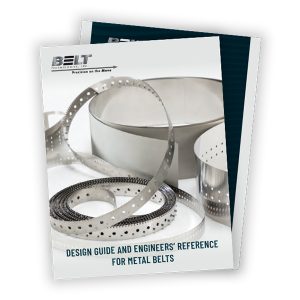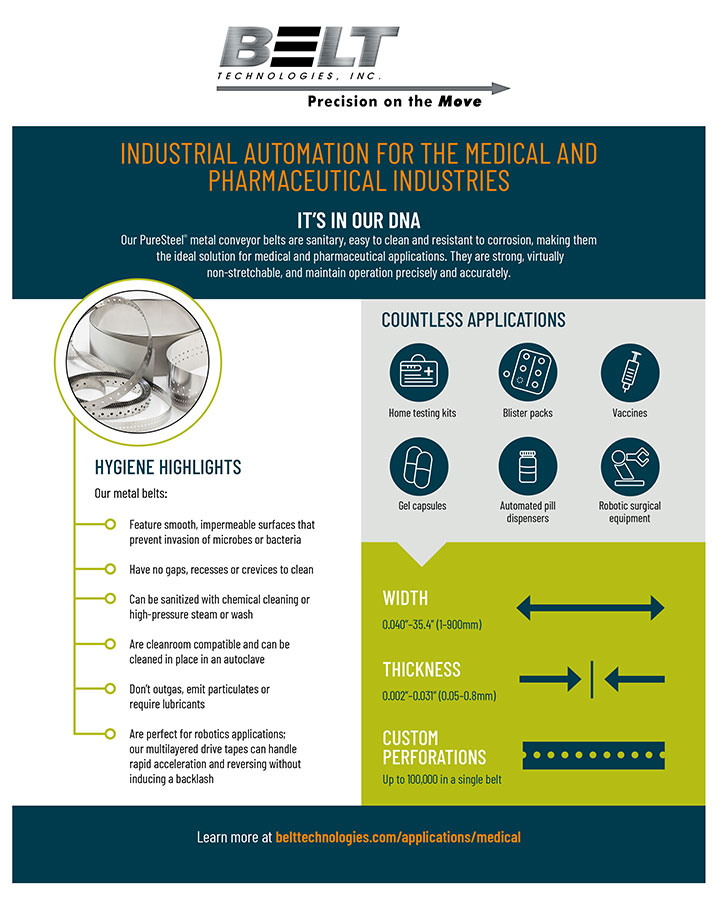A US-based OEM specializing in the production of industrial automation and packaging systems for manufacturers recently approached Belt Technologies, Inc. The OEM needed help designing and manufacturing a metal conveyor belt that could be integrated with existing equipment as part of an automated zip tie production system. When it became clear they needed help with the metal conveyor belt, they went to the experts at Belt Technologies for design feedback and engineering support.
A Unique System Challenge Requires Input from the Metal Conveyor Belt Specialists
The purpose of the system was to transport groupings of plastic zip ties through multiple processes as part of a production line. The OEM needed a belt that could accommodate the system’s custom carriers while moving the zip ties through production.
The zip ties are first collected into the groupings, known as nests. The nests are inspected, indexed, and then passed through a laser cutter that separates the ties. The excess plastic is removed from the nested zip ties and drops through a hole in the primary belt to a secondary belt, where it is transported away for reuse or disposal. The zip ties proceed to the next stage of production.
Design Support and Collaboration Creates Customized Automation Solutions
The customer came to Belt Technologies with a strong background in engineering automated production equipment. Much of the initial design was set in place, including the customer’s design for the special carriers. Belt Technologies’ engineers worked with the customer on some of the more challenging aspects, such as deciding how the nest carriers would attach to the belt and what methods would most effectively assist belt tracking.
With the added design support from Belt Technologies, the final product was a 301-series stainless steel conveyor belt with large pockets for relief and special carrier attachments designed to hold the zip ties in place. With the double layer system for removing the excess plastic, accurate tracking was imperative and the belt is now force-tracked with V-guides to maintain alignment.
For this project, the new design was successfully integrated into the production line, which is still under construction. Although this system is still in its early stages, the customer was so satisfied with the product that they have already ordered a second, larger version to accommodate production of longer zip ties.
Your System Success Is Our Priority
The most popular question we are asked is “Why metal belts?” Many OEMs that produce equipment for industrial automation tasks will turn to Belt Technologies because our engineers understand the inherent properties and benefits of metal belts. Customers require our engineers’ support to predict how metal belts will perform under specific conditions. When one of our engineers works with a customer, the first priority is to outline the benefits of metal belts as they pertain to the specific needs and requirements of the application.
Could your automated system design benefit from the experience of dedicated metal conveyor belt engineers? Contact the experts at Belt Technologies, Inc. today.



